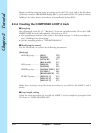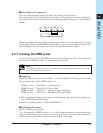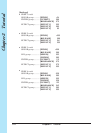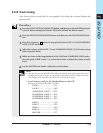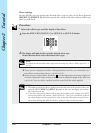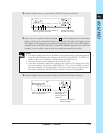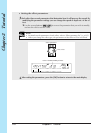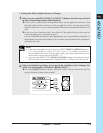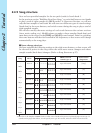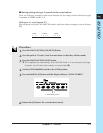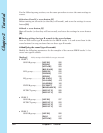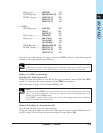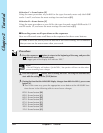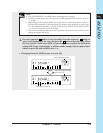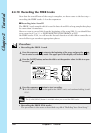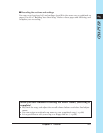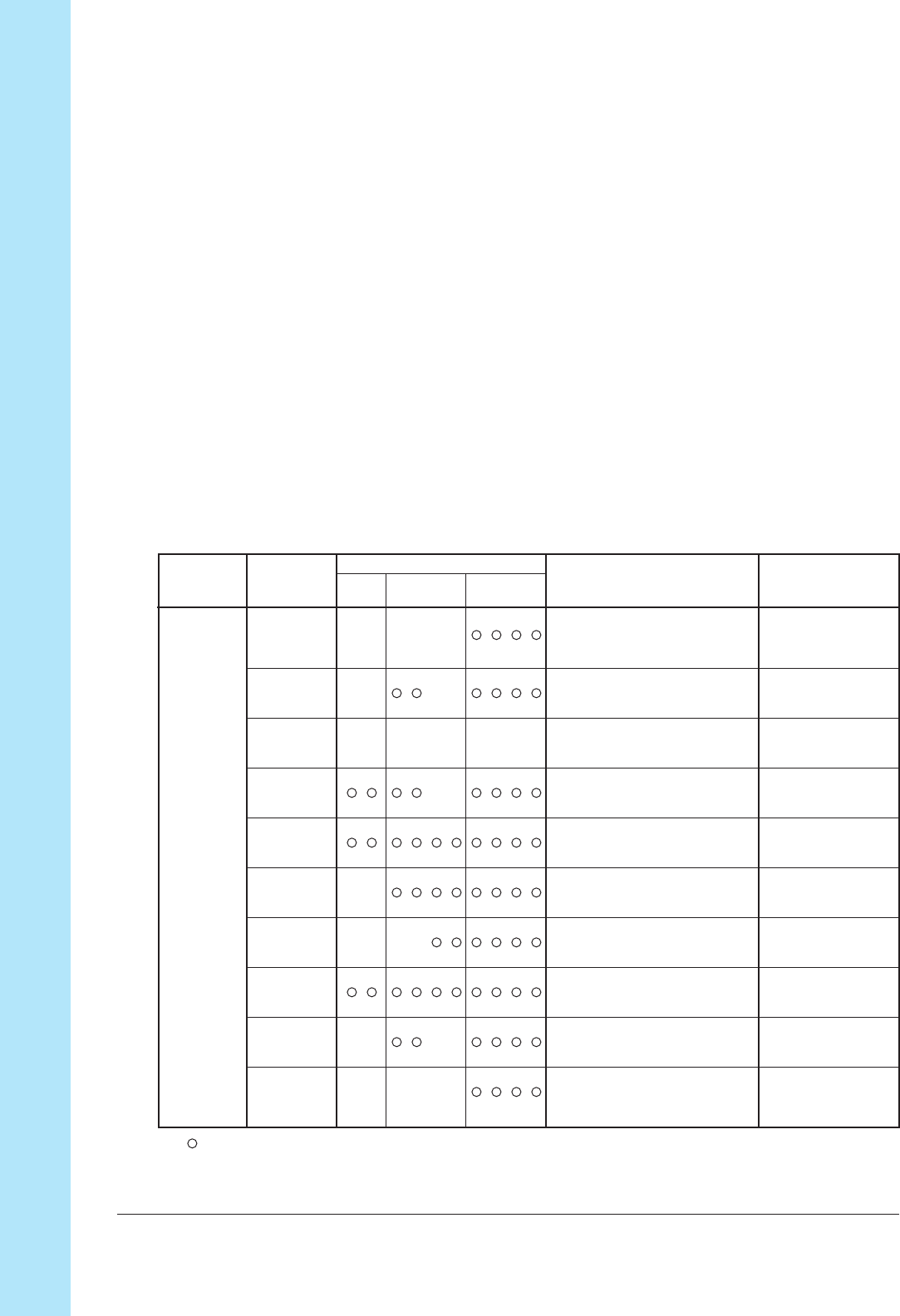
Chapter 2 Tutorial
120 Chapter 2 Tutorial
2.4.9 Song structure
Now we have provided samples for the ten pads (tracks) of track bank 1.
In the previous section “Building Your Own Song,” we switched between two banks
to play a total of eight samples on FREE tracks 1–4. However this time, we will use
only the four samples of one bank. We will store two different types of sound settings
(knob data) in the scene buttons, and switch scenes during the song to play a total of
eight sampled sounds.
We will also modify the mute settings of each track between the various sections
(intro, main, ending, etc.). Modifications we make to these samples (knob data) and
mute data can be stored in the [TOP] and [A]–[G] scene buttons. Data for switching
the scene buttons will then be recorded in the sequencer, so that scenes will change
automatically as the song plays.
■ Scene change structure
We have assigned the following settings to the eight scene buttons, so that scenes will
be selected at points in the song where the track mute status changes and where
sample sounds (knob data) changes. (Refer to Song Structure: p.97)
Track Mutes Settings *1
Song Block LOOP C. LOOP FREE
FREE-track 1-4 Scene button
12 12341234
Sound type *2 dssignment
001:1
: Intro A ×× ××××
Type “B” Sound [Top]
:
009:1
:
Intro B ××
×× Type “B” Sound [A]
:
023:1
:
Break ×× ×××××××× Type “A” Sound [B]
:
025:1
:
Section A
×× Type “A” Sound [C]
:
041:1
:
Section B
Type “A” Sound [D]
:
057:1
:
Section C ××
Type “B” Sound [E]
:
071:1
:
Section D ×× ××
Type “B” Sound [F]
:
073:1
:
Section E
Type “A” Sound [D]
:
105:1
:
Ending A ××
×× Type “B” Sound [A]
:
121:1
:
Ending B ×× ××××
Type “B” Sound [G]
:
130:1
*1:
indicates ON (track will sound), X indicated MUTE (track will not sound)
*2:We refer to the samples of FREE tracks 1–4 that were created in the process up through page 119 as type “A”
sounds. In the pages that follow, we will specify new type “B” sounds, and store them in scene buttons.



